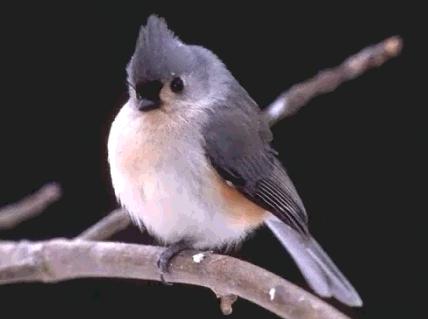Feb 12 2007
I Think therefore I See
I’m vacationing in Florida, which happens to be a great place for birding, so I took my daughter to a local nature preserve this morning. I took up birding as a hobby only recently and it provided for me a concrete example of how our mental model of the universe shapes what we see. For 38 years I saw the world through the eyes of a non-birder, and in the last four years my eyes have been opened to a far more detailed and complex avian landscape (skyscape?).
I have always enjoyed nature, so I was familiar with the birds common to Connecticut where I live. I could recognize crows, doves, blue jays and cardinals. I noticed hawks in the sky, and awaited the robins of spring. There were little black birds and little brown birds and then the more exotic birds I would see in pet stores and on TV. It was a very small feathered universe.
On the other side of my birdist transformation, I can now recognize score of species I never knew existed. It is amazing to me, for example, that I never noticed the presence of the tufted titmouse – a very common bird in CT. Previously I might have described the creature as a small gray bird. Perhaps I would have noticed the tuft of feathers on their head, prompted by the name. Now my birder eyes are drawn also to the details of the white belly and the subtle blush of red on the flanks, the dark eyes, the short black beak, and the patch of black on the face.

Both downy and hairy woodpeckers are regular visitors to my feeder. They are very similar birds, but I now notice the fact that hairys are slightly larger, and they have a relatively longer beak and lack the black bars on their tail feathers sported by the downys. Males of both species have a small red patch on the back of their neck while the females do not.
The experience has reinforced what I learned abstractly as a science enthusiast and neuroscientist – that we see what we know. Our brains are pattern-seeking, pattern-recognizing machines. We tend to fit whatever we see, hear, or otherwise experience into patterns we already know. If our set of known patterns are limited, we will shoe-horn the vast and complex world into our limited repertoire. We have all had the experience of listening to the words of a popular song an misperceiving what we think the singer is singing. We hear an indistinct pattern of verbal sounds and make the closest pattern match we can. What is uncanny is that once we make a mental match, that is what we hear. It usually requires someone else pointing out the error and forcing us to reconsider our pattern match.
Young children provide an excellent and often humorous example of this also. Children have a much small repertoire of patterns than adults, and they innocently make simple pattern matches. For example, when my daughter was in kindergarten the students were told they need to be examined for “headlights.”
Even more important than the notion that we have a limited set of visual and auditory patterns we recognize is the fact that we have a limited set of conceptual patterns. This is reflected in our language – in fact the conventional wisdom is that language greatly expanded the mental abilities of our species. Our ability to have a concept is tied to having a word as a placeholder for that concept. This is why I love learning a new word that actually represents a new concept for me – it has not just expanded my vocabulary but also has given me a new mental tool with which to mentally map the world. Therefore people who have a more sophisticated vocabulary also think in a more complex and subtle fashion. (I use the word “sophisticated” here because mere number of words is not enough – at times people use words that are unnecessarily fancy, when simpler words will do, in order to sound more educated or intelligent. This is not the same thing as words that are more subtle, precise, or discriminating.)
It is for all of the above that I am an advocate of education for its own sake. Almost anything that we learn expands our mental horizons, and gives us a greater scope of mental tools with which to grapple with the universe. Also, as pattern-seeking creatures, we tend to seek common patterns among our various areas of knowledge, and sometime these emergent patterns teach us something deeper about reality. You cannot anticipate how one area of knowledge, as esoteric and impractical as it may seem, will enrich your conceptual model of some other area of learning.
A detailed knowledge of birds may have limited practical utility in its own right, but it has taught me unanticipated lessons about how we see the world. It has given me greater humility when contemplating those areas of knowledge I have not studied to the same degree. It contains lessons for categorization, natural variation, identification, behavior, habitat, conservation, color, proportion, and others. It has also provided me with a personal and profound example of everything I discussed in this blog.






